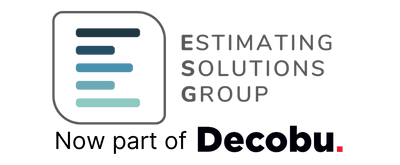
At the end of the day, the job must be done.
AutoCAD or REVIT, if the design is clear, complete, and well presented, both programs should be capable of the same. Or that is what I thought…
After working in technical drawings for almost twenty years, I can say that the perspective, functionalities, and application extent of both software are completely different. My first contact with the world of drafting-design was back in high school. My teachers, who were very old school, gave me the basic elements to understand and put-on paper different types of layouts. Using a pencil, eraser, paper, ink, rulers, and squares, I learned how to create technical drawings following mainly the ISO and ANSI standards. This was a perfect way to develop drafting skills but was also a source of suffering. One wrong move with the ruler left a permanent ink mark on my task, just when there wasn’t more time for fixing or starting again.
While at university, completing my bachelor’s degree in civil engineering, I found AutoCAD as the unbeatable solution for all my drafting issues. With no more paper nor ink, it wasn’t such a big deal if I did make a mistake. The result was so like those drawings I did in my high school, but more clear, clean, fast and easily done. A time for no problems. Whatever the change my professor wished to be done, just a click of the mouse and the device, column, or road alignment was moved to a new place. Easy… unreal but easy!
Once I finished my career and graduated, I started to work as a construction consultant in a Colombian company. I supervised the execution of tasks and specifically, my job was to make sure that the design projected in the plans matched with the real, physical development. However, I must confess now that only the structure of the building is according to the Engineer’s design. With no coordination across the services designs, it was impossible for me to follow across the different trades/services.
For instance, sometimes I had to define the location of specific elements like the sewer pipe and the ventilation duct. Every time someone asked me about the placement of a certain element it was a nightmare. I had to stop all activities, call the architect, the mechanical engineer, or the hydraulic designer and ask them to please modify their design to fix each clash that came up. Not only this but after this first call, I would also have to justify with the project manager why the deadline of the project had to be moved again.
Evidently, it was nobody’s fault but just a technological barrier that we were facing.
After some years, I started to work with the virtual reality offered by REVIT.
REVIT has been developed to bring design and reality closer together by incorporating service coordination along with an interactive third dimension. This approach relieved some major issues with time and budget, which are both crucial aspects of construction planning.
REVIT has made my work a more functional, collaborative, and integrated space, allowing me to spend time optimizing design coordination instead of calling and coordinating the project in a manual, labour-intensive way.


 Estimating Solutions Group helps small to large-sized contractors solve some of their urgent challenges. From sending competitive tenders, submitting winning bids, exploring new and promising areas in the electrical industry, to simply providing assistance during staff absence, rest assured we have the knowledge, skills & experience to be an asset to your operations.
Estimating Solutions Group helps small to large-sized contractors solve some of their urgent challenges. From sending competitive tenders, submitting winning bids, exploring new and promising areas in the electrical industry, to simply providing assistance during staff absence, rest assured we have the knowledge, skills & experience to be an asset to your operations.